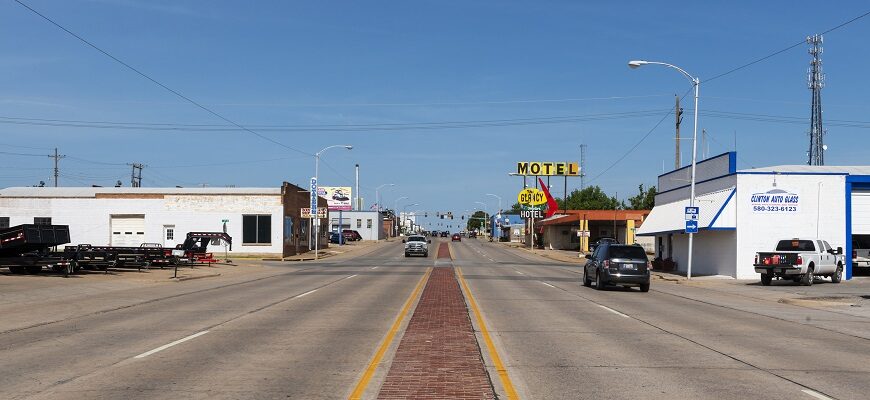
In recent years, newspaper headlines and commentators have bemoaned a growing “urban–rural divide,” characterized by stark differences in political and social attitudes that appear to be fueled, at least in part, by diverging economic fortunes.
For much of the nineteenth and twentieth centuries, urban and rural areas seemed to enjoy stability in their economic functions and relationships to each other. Cities were the centers of economic and political decision-making, with jobs in product design and development, manufacturing, finance, business and consumer services, and higher education, specialized health care, entertainment, and government. The lifeblood of rural areas was agriculture, forestry, fishing, mining, and manufacturing. And although both cities and rural areas within a given region traded products and services with other regions and countries, they also were linked to each other symbiotically through regional business supply chains.
Near the end of the twentieth century, the twin forces of automation and globalization had dramatically decreased employment in the rural and small-town mainstays of manufacturing, agriculture, and extractive industries. As job prospects diminished, many younger workers departed these communities, leaving an aging population behind. These losses, in turn, hollowed out retail and services sectors, reducing tax revenues, and undermining local government financial health and capacity for delivering basic services, leaving little or nothing with which to finance community revitalization.
At the same time rural areas have been struggling, metropolitan areas have been dramatically increasing their populations and expanding geographically, with every indication these trends will continue. In a self-reinforcing pattern, businesses producing innovative design, software, finance and communication, business, health care, education, and entertainment services crowd into metropolitan areas to take advantage of pools of talented labor that form as high-skilled professionals seek the career opportunities these businesses offer. As they do so, they bid up housing costs and clog roads and highways to previously unimagined levels. It is likely that the forces of agglomeration that currently favor geographically expanding metropolitan areas will continue to do so. In short, rural losses appear to be urban gains.
And yet, this picture masks other important realities. The urban–rural divide is only one divide besetting the United States. We face serious social equity issues that manifest themselves as a growing income and wealth divide, a persistent and sometimes virulent racial divide, and a digital divide between those with access to technology and those without it. These divides cut across the urban–rural divide, and in many ways, they also exacerbate it.
It is doubtful that regions will realize their potential for shared prosperity of urban and rural areas without strong state policy leadership and technical support. And states will be limited in what they can accomplish without funding support from the federal government; this will be important even in the post-COVID-19 budgetary environment. Equally important, federal support must be flexible, so that it empowers states and localities to create the innovative, regional solutions that their urban and rural challenges require.
Indeed, we cannot afford to write-off rural America. Certainly, continuing evolutions in technology will bring more changes in the geography of work and settlement patterns. Metropolitan regions will, most likely, continue to expand for the foreseeable future. Some remote areas may continue to lose population and perhaps become even less viable as independent places. But other rural areas and small cities surely will revitalize and not necessarily in ways that we can predict today.
So how to address the urban-rural divide in America? This topic is the subject of a recent special issue of the State and Local Government Review (2019, Vol. 51(4)) edited by John Accordino. The purpose of the volume was not to predict which places will revitalize and which ones may not. Rather, the papers contained in the issue identify ways public policy can strengthen urban–rural connections and create new ones, solving common challenges so entire regions can prosper. In doing so, the authors take the view that although state and federal governments must play crucial roles in guiding and supporting regional initiatives, effective and lasting solutions will be place-based, created and owned by the people whose lives and livelihoods depend upon them.
Follows this link to access the special issue of State and Local Government Review (2019, Vol. 51(4)), which includes the following papers:
- Introduction to Bridging the “Urban–Rural Divide” – John Accordino
- Local Governments across the Rural–Urban Continuum: Findings from a Recent National County Government Study – Linda Lobao, Paige Kelly
- Bringing Communities into the Digital Age – Roberto Gallardo
- Solving the Rural Broadband Equation at the Local Level – Harold Feld
- Expansion of Telehealth Across the Rural–Urban Continuum – Ann D. Bagchi
- Strengthening Intra-regional Connectivity: Implications for Bridging the Urban–Rural Divide – Christiana McFarland
- Workforce Policy for the Future: Connecting Skills and Careers – Robert Giloth
- Community Development Financial Institutions: Invaluable Capital Partners in Low-income Rural Areas – Jeffrey Mosley
- Regional Solutions for Rural and Urban Challenges – Brian Dabson
- Deepening Interlocal Partnerships: The Case of Revenue-sharing Infrastructure Agreements –Stephanie D. Davis, Meghan Z. Gough
- University-anchored Partnerships That Reimagine the Urban–Rural Divide – Scott Tate, Anne Khademian
- The Best of Times, the Worst of Times: An Unconventional Conclusion – Parris N. Glendening
